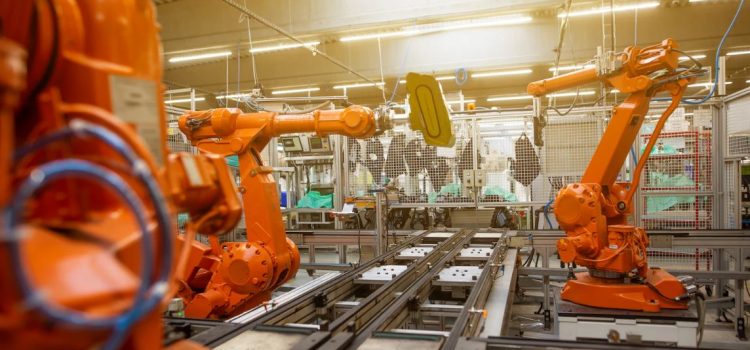
This is a free excerpt from one of Shortform’s Articles. We give you all the important information you need to know about current events and more.
Don't miss out on the whole story. Sign up for a free trial here .
Could AI replace manual labor? Are robot workers more or less expensive than human workers?
Large-language-model AI can interpret natural-language commands and convert them into sequences of commands that a robot can execute. This makes it possible to build general-purpose robots that can be told or taught how to do things like human workers—and possibly replace them.
Here’s a look at how AI is taking over jobs and who is at risk.
AI Is Replacing All Types of Jobs
Is AI taking over jobs? In the 20th century, automation largely replaced production-line factory workers with robots. Some sources contend that AI-powered tools like ChatGPT are in the process of similarly displacing writers and other information workers. But as AI is increasingly integrated into robotics, it may ultimately have a bigger impact on manual labor and skilled trades than on information workers like writers and engineers.
How Could AI Replace Laborers?
Historically, robots could only do things they were specifically programmed to do by humans. Because designing and programming a robot for any given task requires a significant up-front investment, automation was only practical for well-defined repetitive tasks, such as assembly line work.
But large-language-model (LLM) AIs like ChatGPT provide two capabilities that, when used together, change the situation: They can interpret natural language, and they can write computer code. This means it is now possible to build a robot that can respond to commands it wasn’t pre-programmed for. General-purpose robots like this could, at least in theory, be substituted for human workers in sectors like retail, food service, manual labor, construction, and other skilled trades.
Moreover, if someone creates a humanoid robot with physical capabilities that lag behind human workers by only as much as LLMs lag behind human authors, the robot might be in a better position to take over the manual labor market than LLMs are to displace human authors. This is because vocations like writing tend to disproportionately favor exceptional quality, but the market for physical labor doesn’t.
When Will AI Replace Laborers?
How far away is general-purpose robot labor in practice? The technology is (at least arguably) already here, so it’s not so much a question of when the transition will start, but of how fast and how far it goes.
How Well Do General-Purpose Robots Currently Perform?
At present, commercially available robots are limited to performing fairly specific tasks. However, some research prototypes have demonstrated the ability to interpret natural language and reduce it to commands they can execute, while other prototypes demonstrate bipedal mobility and motor skills approaching human level. Still other companies are working on putting these capabilities together: It seems plausible that within the next few years, robotic laborers may become available whose capabilities lag behind human laborers only by as much as LLMs lag behind human authors.
How Much Does Robotic Labor Cost?
But would robots be cost-effective for general labor? Assuming robotic labor could be substituted for human labor on an hourly basis, the answer is, most likely, yes.
Tesla hopes to keep the cost of its Optimus robots under $20k, although critics say that might be overly optimistic. Agility Robotics has been selling its “digit” robots for about $250k each, though they intend to reduce the price of subsequent models.
For comparison, a human who works 40 hours a week, 50 weeks a year at $10 per hour earns $20k annually, and might cost the company $25k or more if you include taxes and benefits paid by the employer. Thus, if a $20k robot could replace a single full-time worker making $10/hr or more, it would pay itself off in less than a year.
But, unlike human workers, robots can work around the clock. If a robot works 16 hours per day (some time would still be required for recharging batteries), seven days a week, it could work 112 hours per week instead of 40. That means it could actually substitute for 2.8 workers, so even a $250k robot could pay itself off in less than four years.
Furthermore, it’s already common practice for manufacturers to offer robots for rent or lease as well as for sale. This defrays the up-front cost, making it easier for companies to adopt robotic technology, especially small companies that have limited cash on hand. Some even bill by hours the robot actually works, with rates in the neighborhood of $4/hour.

Want to fast-track your learning? With Shortform, you’ll gain insights you won't find anywhere else .
Here's what you’ll get when you sign up for Shortform :
- Complicated ideas explained in simple and concise ways
- Smart analysis that connects what you’re reading to other key concepts
- Writing with zero fluff because we know how important your time is






